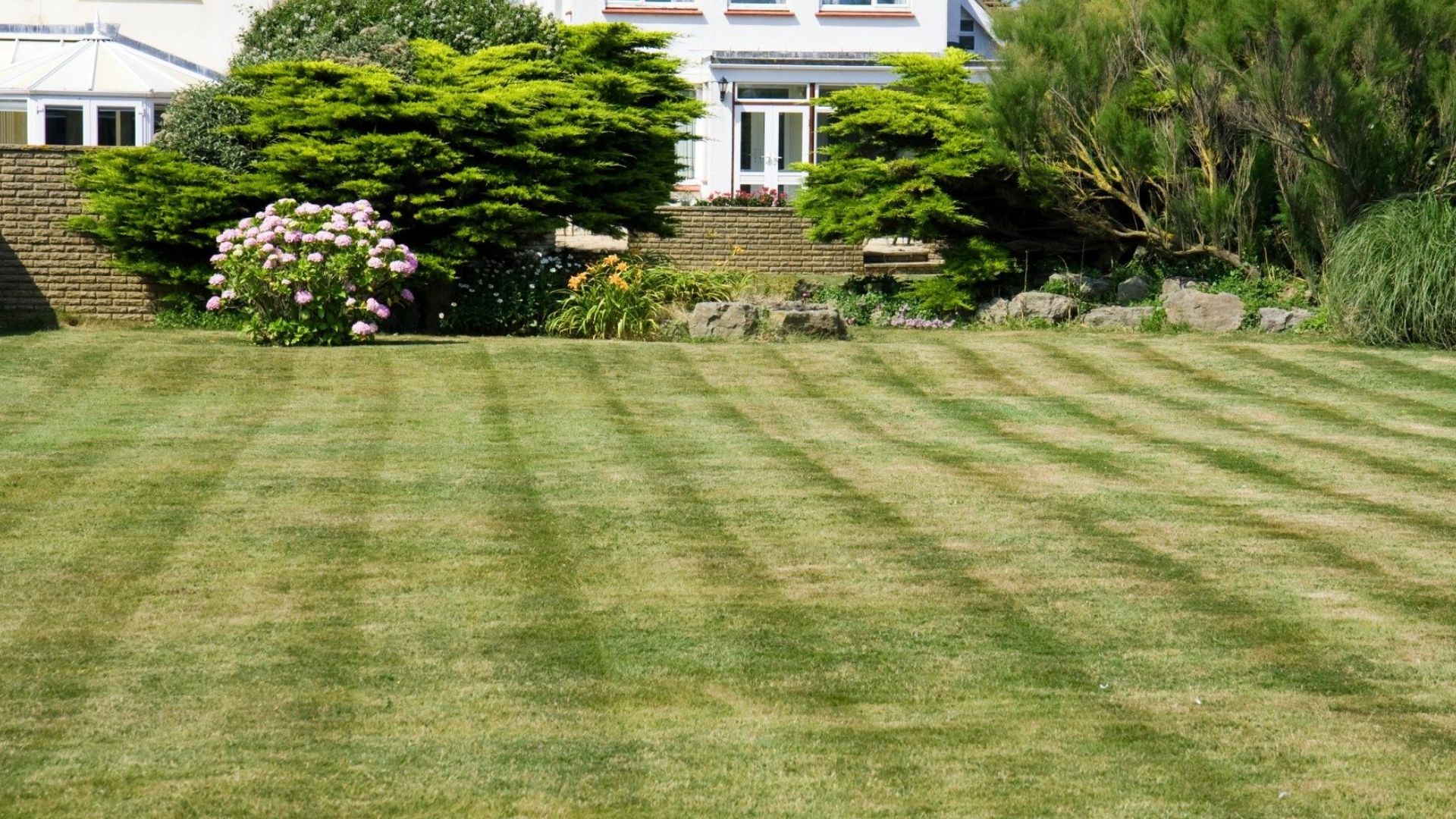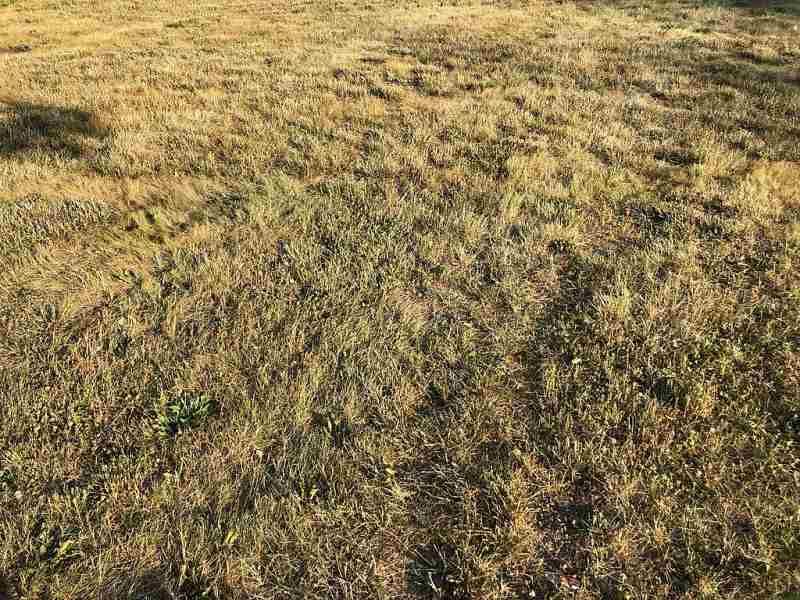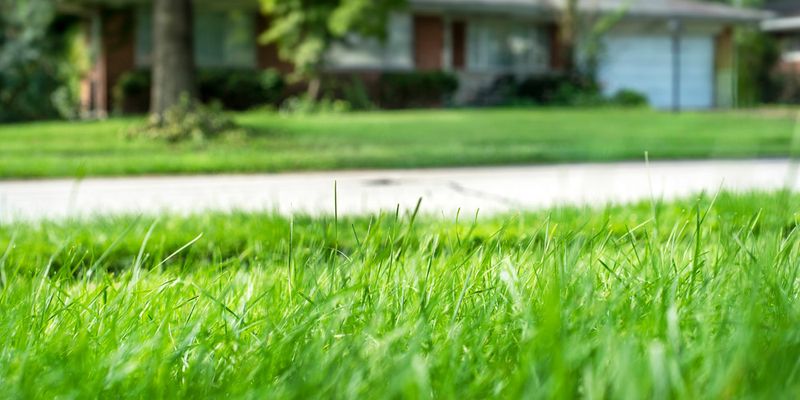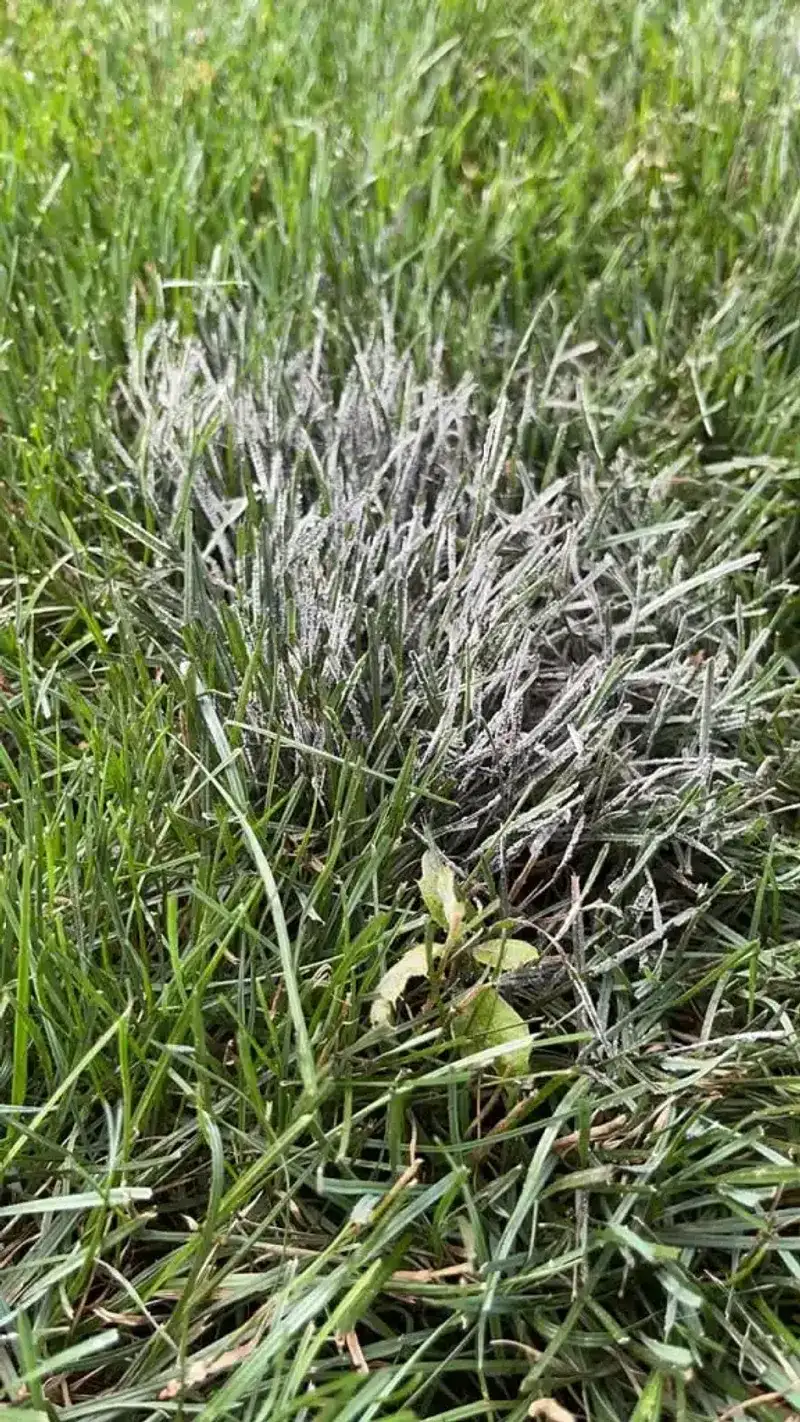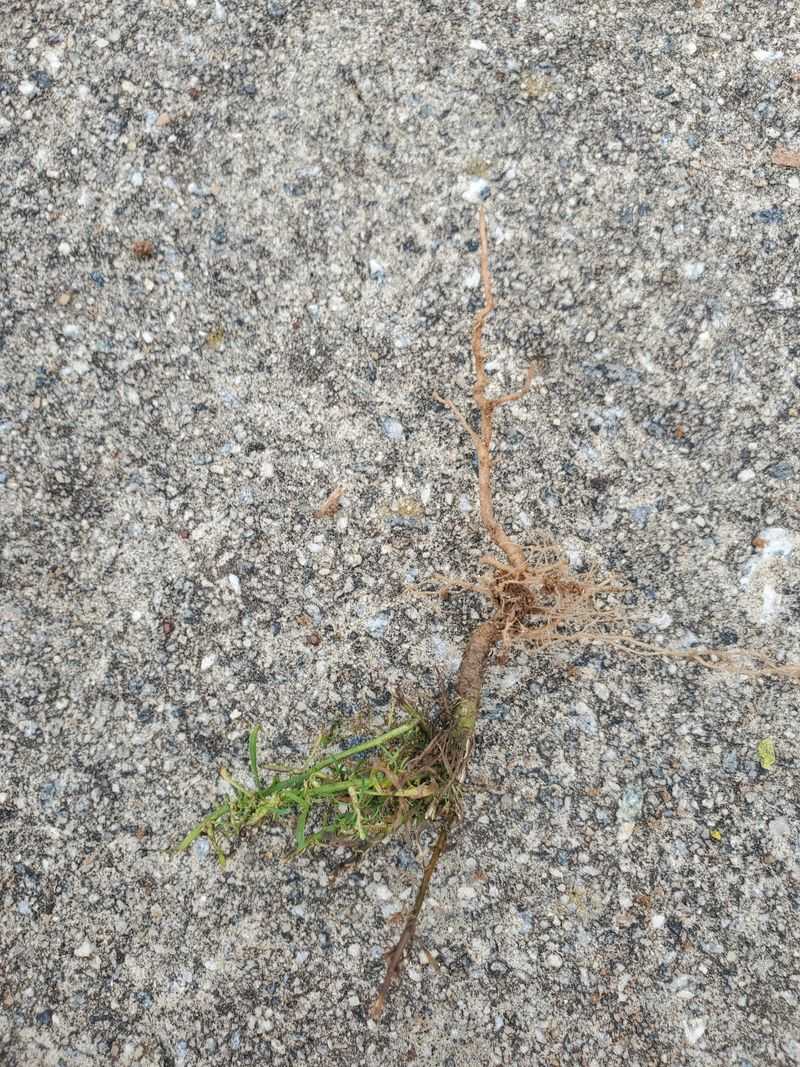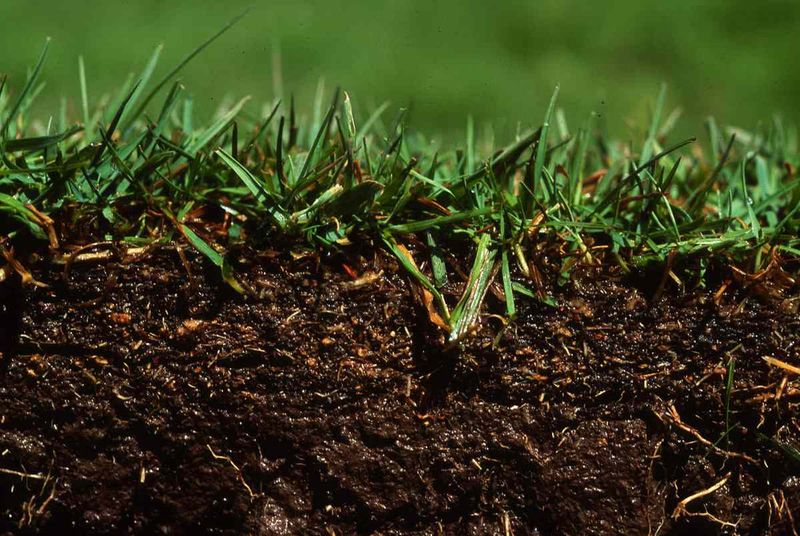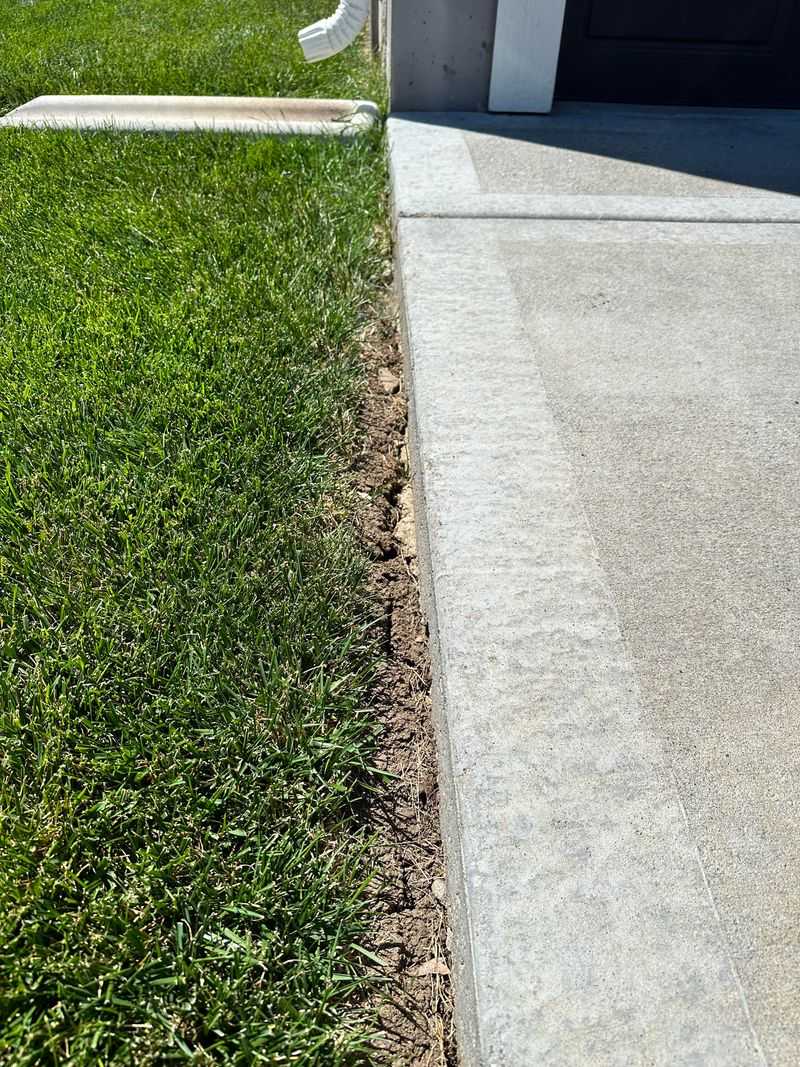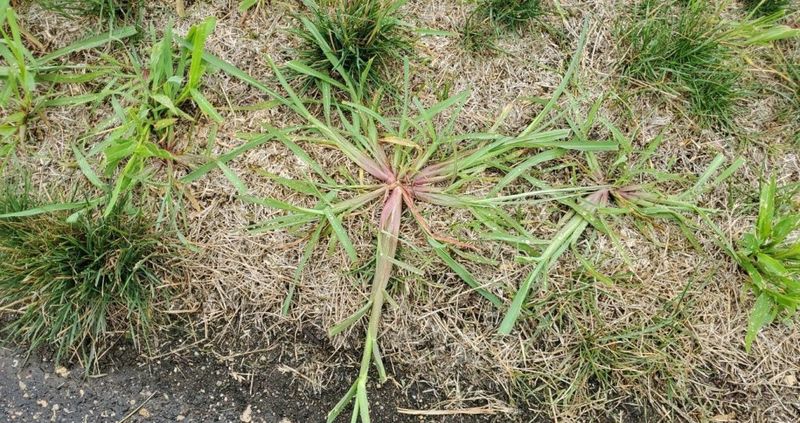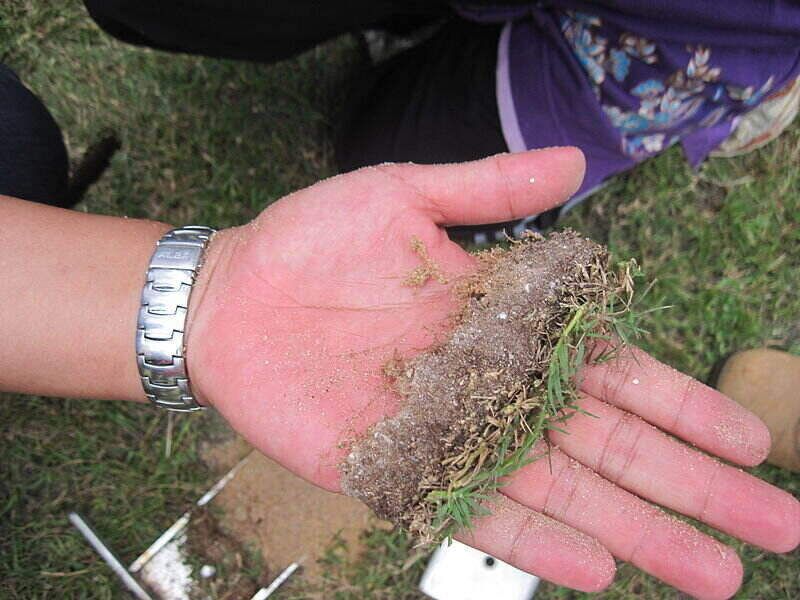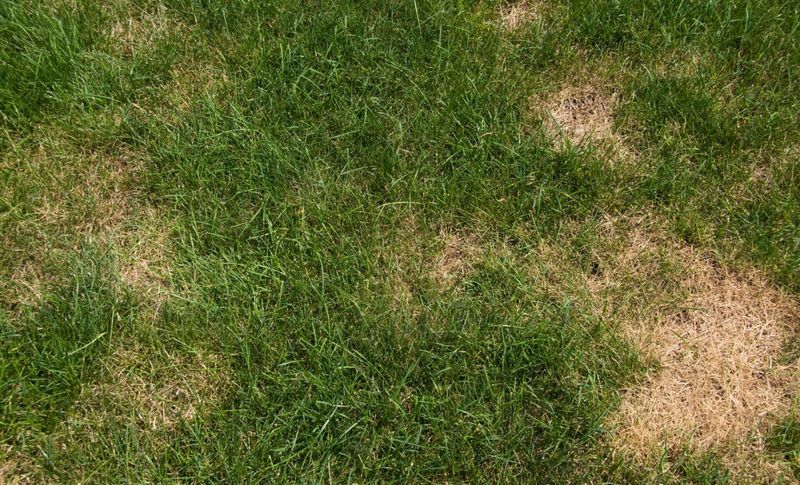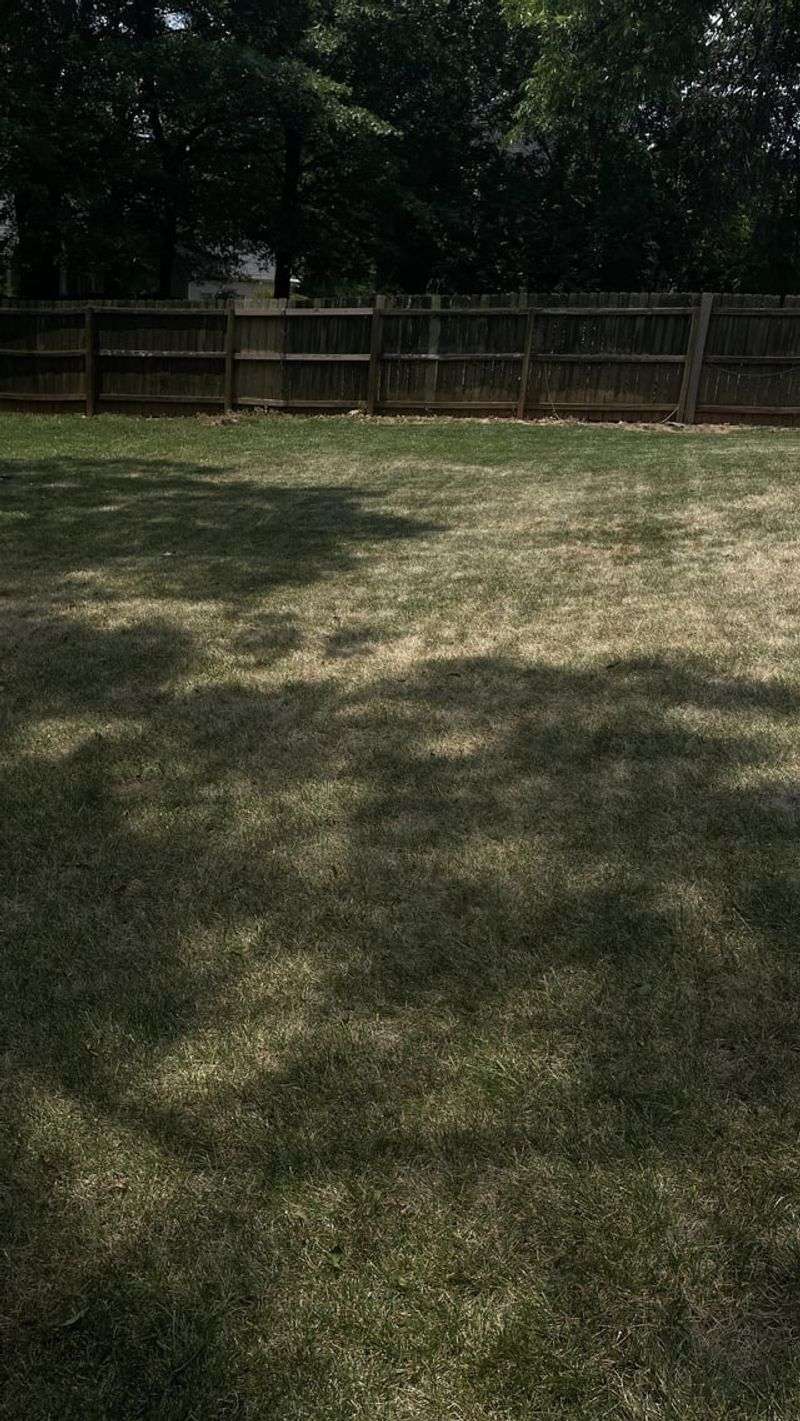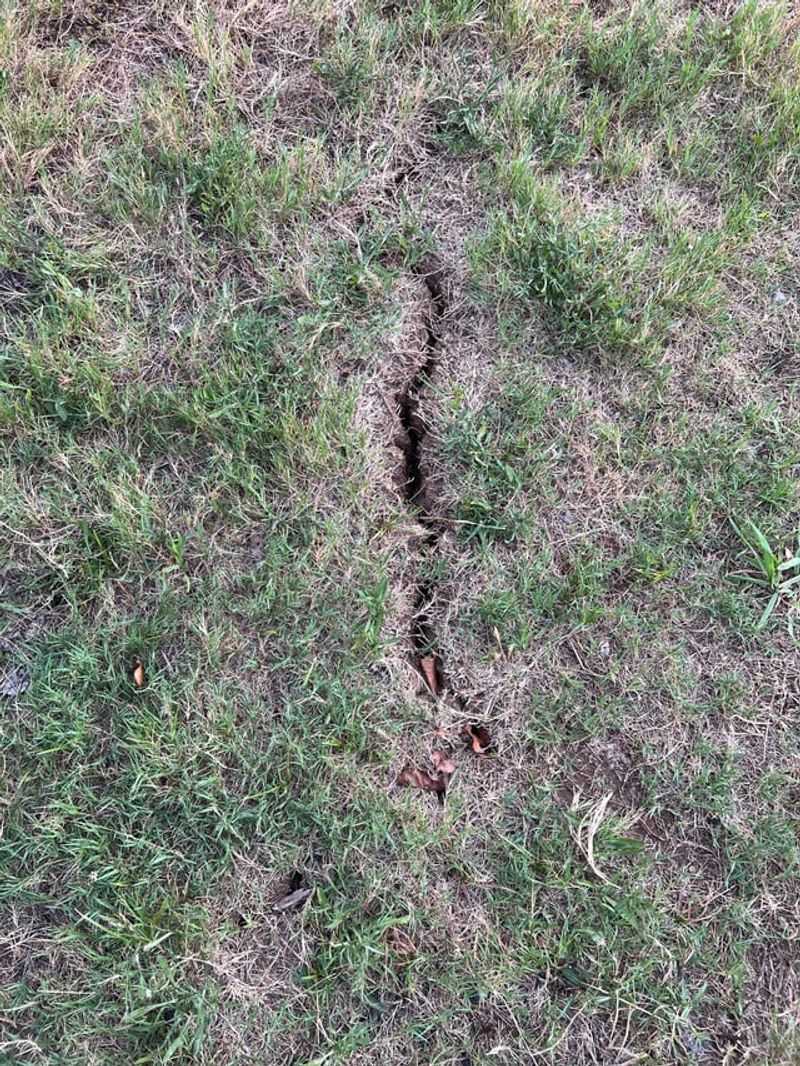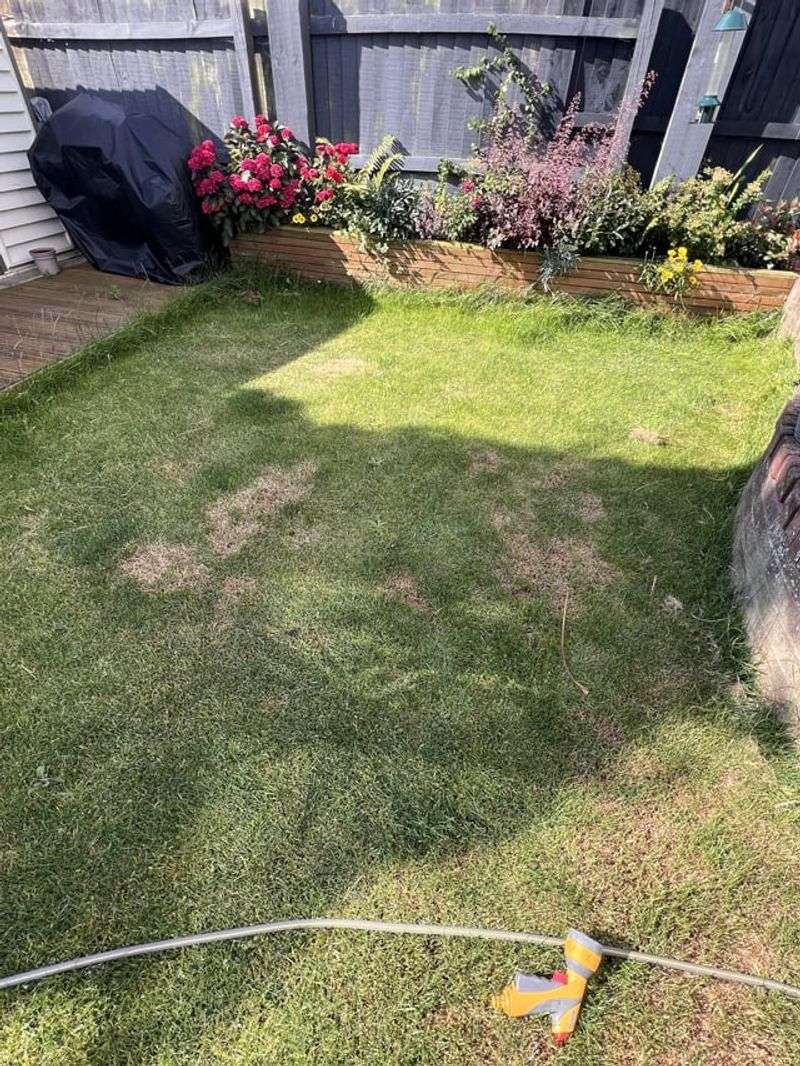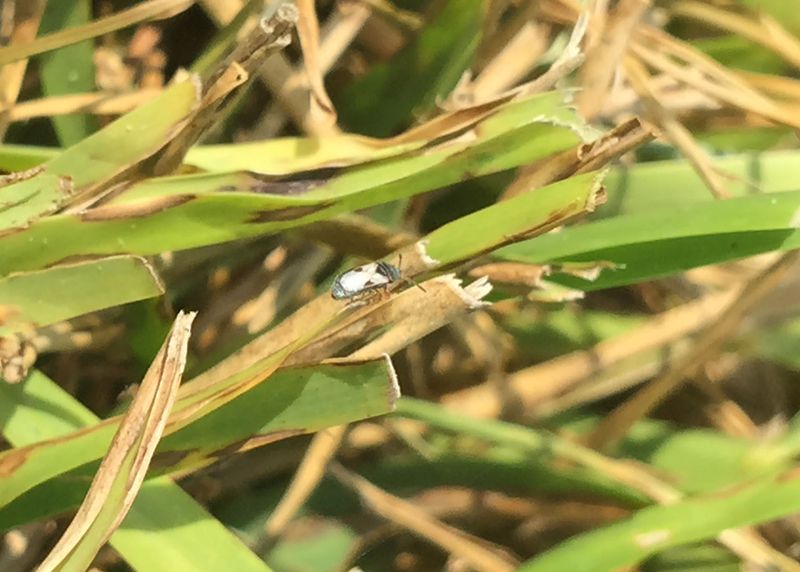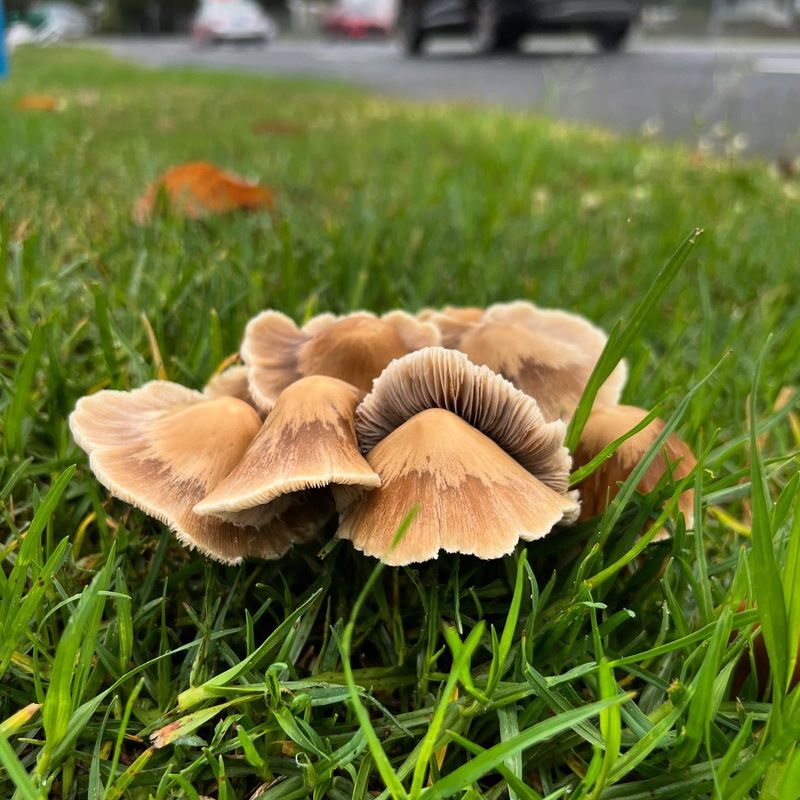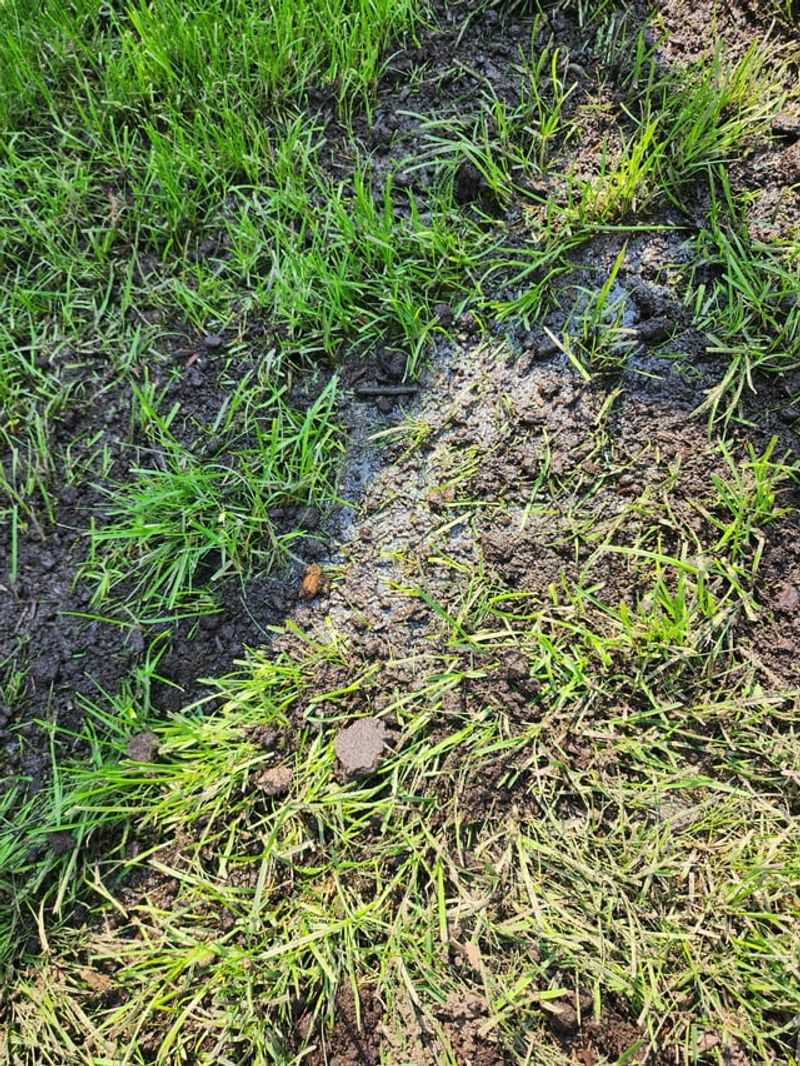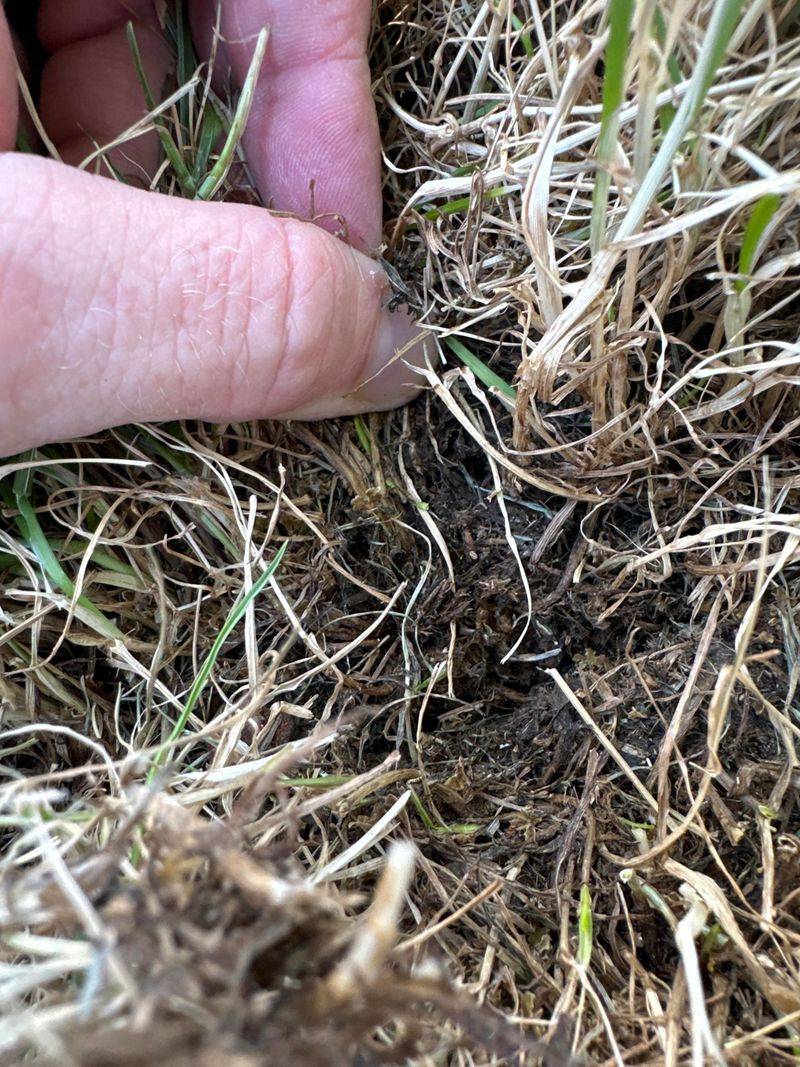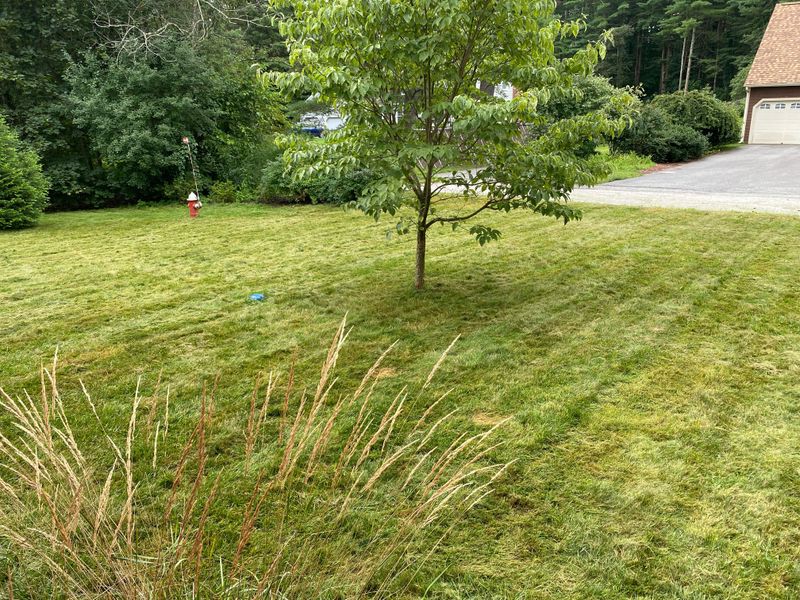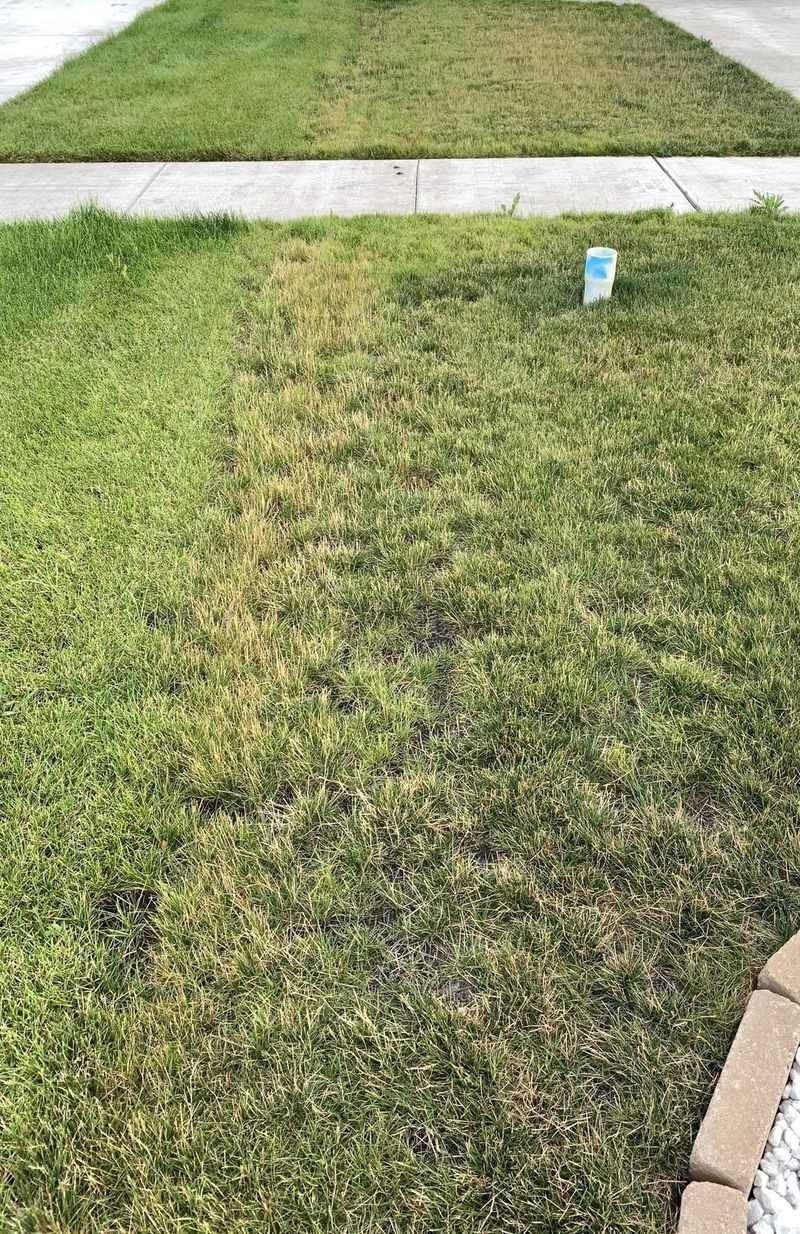Summer heat can hit hard, leaving your once-lush lawn looking dry and lifeless in no time. That crunchy, brown grass? It’s often the result of heat stress—not just lack of water. And if you spot it early, you can take action before real damage sets in.
Look out for telltale signs like wilted blades, bluish-gray patches, or footprints that linger instead of bouncing back. These subtle clues mean your grass is struggling and needs a little extra care to survive the sizzle.
With the right moves—deeper, less frequent watering, raising your mower blade, and limiting foot traffic—you can nurse your lawn back to health. Skip the guesswork and save yourself from a full-on turf rescue mission later.
1. Footprints That Don’t Bounce Back
Walking across your lawn shouldn’t leave lasting impressions. When footprints remain visible long after you’ve passed, your grass lacks the moisture and resilience to spring back up.
I’ve noticed this happens most often during mid-afternoon when temperatures peak. The cells in grass blades are actually collapsing from dehydration.
Water deeply in the early morning to rehydrate cell structures. A good soaking of at least one inch of water twice weekly works better than daily light sprinklings that barely penetrate the soil.
2. Grass Blades Folding in Half
Healthy grass stands tall and straight. During heat stress, individual blades actually fold lengthwise like tiny tacos – a desperate water conservation tactic.
The technical term for this is ‘leaf rolling,’ and it’s one of the earliest warning signs before more severe damage occurs. My south-facing slope always shows this first.
Increase watering depth rather than frequency. Adding a wetting agent to your soil can help water penetrate more effectively, especially if you have clay soil that tends to repel initial moisture.
3. Blue-Gray Color Tint
Before turning brown, heat-stressed grass often takes on a distinctive blue-gray hue that many homeowners miss. This color change indicates your lawn is entering survival mode.
The waxy coating on grass blades reflects more light when under stress, creating this silvery appearance. I’ve saved sections of my lawn by catching this sign early.
Water immediately when you spot this color shift. If only certain patches show this tint, check for soil compaction in those areas and aerate if needed to help water reach the roots more effectively.
4. Crispy Brown Patches
Those scattered brown spots aren’t random – they’re typically the first areas to show severe heat damage. Often appearing on slopes, near pavement, or in full-sun locations.
Heat builds up in these vulnerable zones, causing moisture to evaporate faster than the grass can absorb it. The resulting patches feel crispy underfoot and crunch when walked on.
Hand-water these spots specifically, applying water slowly so it soaks in rather than runs off. Adding mulch around nearby hardscapes can reduce reflected heat that intensifies the damage.
5. Shrinking Root Systems
Dig up a small sample of grass and examine the roots. Heat-stressed lawns develop shorter, shallower root systems as they struggle to survive with limited resources.
Healthy grass should have roots extending 4-6 inches deep. During heat stress, roots may shrink to just 1-2 inches, making the grass even more vulnerable to drought.
Apply a quarter-inch of compost as a top dressing to cool soil temperatures and improve moisture retention. Watering deeply but infrequently encourages roots to grow downward seeking moisture rather than staying near the surface.
6. Soil Pulling Away From Edges
Check along sidewalks and driveway edges where concrete meets your lawn. Heat-stressed soil actually shrinks and pulls away from these boundaries, creating visible gaps.
These gaps expose roots to even more heat and accelerate moisture loss. I’ve found these edge areas often need twice the water of central lawn sections.
Fill these gaps with a mixture of compost and topsoil, then water thoroughly. Consider installing drip irrigation along these boundaries where heat concentration is highest to provide consistent moisture.
7. Weed Invasion Acceleration
Suddenly seeing crabgrass and other weeds popping up everywhere? Heat-stressed lawns create perfect openings for opportunistic weeds that thrive in high temperatures.
Many common lawn weeds have deeper root systems than turf grass, allowing them to access moisture that your regular grass can’t reach. They essentially outcompete your weakened lawn.
Rather than reaching for herbicides, which can further stress heat-damaged grass, pull weeds manually and immediately reseed bare spots with heat-tolerant grass varieties. Water new seeds consistently until established.
8. Thatch Building Faster Than Normal
Excessive thatch – that layer of dead grass between soil and living grass – builds up quicker during heat stress periods. Check by digging a small square and measuring this layer.
Anything over half an inch of thatch prevents water from reaching roots effectively. Heat accelerates grass death while simultaneously slowing decomposition of this material.
Dethatch your lawn during cooler morning hours, then water deeply. For severe cases, rent a power dethatcher, but be gentle – stressed grass has fragile roots that can be damaged by aggressive dethatching.
9. Irregular Growth Patterns
When parts of your lawn grow at dramatically different rates, heat stress is often the culprit. Some sections may barely grow while others seem to need constant mowing.
This happens because different grass types and soil depths respond uniquely to heat. My lawn’s shaded northern section often maintains normal growth while sunny areas nearly stop growing altogether.
Adjust your mower height upward to 3-4 inches during hot periods. Taller grass shades soil, reducing evaporation and protecting roots from direct heat, while helping the entire lawn maintain more consistent growth.
10. Morning Dew Disappearing
Healthy lawns typically show morning dew, but heat-stressed grass often remains dry even at dawn. This absence of dew indicates severe moisture deficiency in both soil and grass.
The lack of surface moisture means your lawn isn’t recovering overnight from daytime heat. I’ve found this sign particularly alarming as it typically precedes rapid browning.
Set up sprinklers to run very early morning (4-5am) to mimic natural dew patterns. Consider applying a light horticultural oil spray to reduce evaporation rates and help your grass retain more of the moisture it receives.
11. Hardened, Cracking Soil Surface
Tap the soil with your finger – heat-stressed lawns often develop a crusty, hard surface that water simply runs off rather than absorbs. Small cracks may appear in severe cases.
This compacted surface creates a barrier preventing irrigation from reaching roots. Water beads up and evaporates or runs off instead of soaking in where it’s needed most.
Break up the surface with a garden fork or core aerator, then apply a thin layer of compost. Adding organic matter improves soil structure and creates channels for water to penetrate the hardened surface.
12. Mower Damage Increasing
Heat-stressed grass tears rather than cuts cleanly when mowed, leaving ragged edges that turn brown quickly. Check your grass after mowing to spot this telltale damage.
The weakened cell structure in drought-stressed grass makes clean cuts nearly impossible, even with sharp blades. These torn edges lose moisture faster and become entry points for disease.
Sharpen mower blades more frequently during hot periods. Consider skipping mowing altogether during severe heat waves – maintaining slightly longer grass actually helps protect your lawn from further stress.
13. Increased Insect Activity
Chinch bugs, sod webworms and other pests target weakened lawns. If you’re suddenly seeing more insects in your grass, heat stress has likely made your lawn vulnerable.
These opportunistic pests sense chemical changes in stressed grass and move in quickly. My lawn had a massive chinch bug invasion last summer after just two weeks of extreme heat.
Pour a gallon of water mixed with dish soap over a square yard of lawn – this forces insects to the surface for identification. Choose targeted treatments rather than broad-spectrum pesticides which kill beneficial insects that help control the harmful ones.
14. Mushrooms Appearing Overnight
While it might seem counterintuitive, mushrooms often appear in heat-stressed lawns, especially after watering. They indicate fungal activity in the decomposing root systems of dying grass.
These fungi actually break down organic matter in soil, which can be beneficial long-term. However, their sudden appearance signals that your grass roots are deteriorating from heat damage.
Remove mushrooms if children or pets use the lawn, but focus on addressing the underlying heat stress. Reduce irrigation frequency but increase volume to encourage deeper, healthier root growth that resists fungal invasion.
15. Water Pooling Rather Than Absorbing
When you water and see puddles forming instead of moisture soaking in, your soil has become hydrophobic due to extended heat and dryness. The water beads up like it would on a waxed car.
This water-repellent condition develops gradually as organic compounds in soil change their orientation during prolonged dry periods. I’ve watched entire sprinkler sessions run off uselessly down the driveway.
Apply a soil wetting agent according to package directions to break the surface tension. Water in shorter, multiple sessions rather than one long one to give moisture time to penetrate the resistant surface.
16. Grass Pulling Out Easily
Try gently tugging on grass blades in different areas. Heat-stressed lawns often have weakened root systems that allow entire grass plants to pull out with minimal effort.
Healthy grass should resist being pulled up, requiring significant force to remove from soil. When heat damages roots, this anchoring ability diminishes dramatically.
Apply a root-stimulating fertilizer with low nitrogen but higher phosphorus content. Water it in thoroughly, but avoid high-nitrogen products that stimulate blade growth at the expense of root development during stressful periods.
17. Slower Recovery After Rain
Healthy lawns bounce back quickly after rainfall, but heat-stressed grass recovers much slower or unevenly. Some sections might green up while others remain brown despite equal precipitation.
This delayed recovery happens because heat-damaged grass has compromised cellular structures that limit its ability to process available water efficiently. The lawn’s natural recovery mechanisms are essentially malfunctioning.
Apply a seaweed extract or humic acid solution to stimulate cellular repair and improve nutrient uptake. These natural biostimulants enhance the lawn’s ability to utilize available moisture without forcing new growth that requires additional resources.
18. Soil Temperature Above 85°F
Use a soil thermometer to check ground temperature at root level (about 2-3 inches deep). Readings consistently above 85°F indicate severe heat stress conditions for most cool-season grasses.
At these temperatures, grass roots begin to die back and essential soil microorganisms become less active. The entire soil ecosystem suffers, reducing nutrient availability to your already struggling grass.
Mulch with a thin layer of compost to insulate soil from extreme temperatures. Water deeply at dawn to cool the soil profile before the day’s heat builds up, creating a temperature buffer that protects sensitive root systems.

